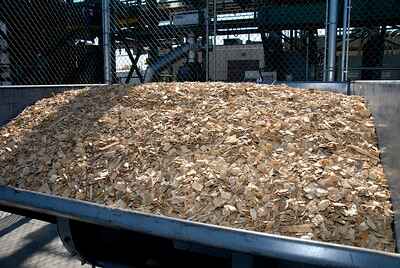5 Advantages of Geothermal Energy Explained
Advantages of geothermal energy are; small carbon footprint, renewable supply, job creation, low complexity, and fossil fuel support.
This article discusses the advantages of geothermal energy as follows;
1). Small Carbon Footprint (as one of the Advantages of Geothermal Energy)
Geothermal energy has a small carbon footprint, because the extraction of geothermal heat from the subsurface of the Earth, does not cause nearly as much emissions as other energy resources like fossil fuels [1].
This means that geothermal power plants operate with low carbon output, and can be made sustainable if relatively-minor measures are taken to bring their environmental impacts to the minimum.
Geothermal energy has a carbon footprint that generally does not exceed 50.0 grams per kWh of electricity generated
It is still important to note that geothermal energy emits some greenhouse gases like carbon dioxide and water vapor [2], although in relatively-small volumes. Some renewable energy resources like solar and wind can make a better choice than geothermal where low emission is a major objective.
2). Renewable Supply
Geothermal energy is renewable because it comes from radioactive decay that occurs continuously in the Earth's core, and is transmitted through rocks, magma and hydrothermal fluids that are naturally produced and replenished.
The sources of geothermal energy include heated rock, subsurface hydrothermal fluids, magma, and hot springs, among others. These sources are all naturally-occurring and renewable, as they are recycled through hydrological, volcanic and tectonic processes.
Geothermal energy being renewable means that it is useful for sustainable development and circular economy, and can play a role in the energy transition to more sustainable options than fossil fuels [4].
However, geothermal energy is not 100% renewable, because the nuclear energy processes and radioactive materials that produce geothermal heat in the Earth's interior, are finite and can be depleted.
It is only considered renewable in that the heat itself is conserved effectively in the subsurface, and will remain abundant for as long as the Earth exists.
3). Job Creation (as one of the Advantages of Geothermal Energy)
Geothermal energy has been responsible for creating up to 100,000 jobs globally [3].
Jobs related to geothermal energy development include those for plant operators, mechanical engineers, drillers, project coordinators, civil engineers, and electrical engineers among others.
The role of geothermal energy in job creation is important as a driver of economic growth and development.

4). Low Complexity
The principle of geothermal energy extraction is relatively simple, as it involves mainly heat transfer processes.
This is an advantage, and implies that harnessing geothermal energy comes with minimal demand for expertise in knowledge and skill.
Low complexity makes it possible for simple designs to be used to harness geothermal energy effectively, and it reduces the overall cost involved.
5). Fossil Fuel Support (as one of the Advantages of Geothermal Energy)
Geothermal energy is preferable to fossil fuels because it produces less greenhouse emission, air pollution, and health hazards, than fossil fuels.
Also geothermal energy can be extracted without using fossil fuels to power the equipment; such as where superconductors like graphene are used to extract geothermal heat from the subsurface.
The favorable attributes of geothermal energy make it a good option to serve as backup for fossil fuel resources. It can also play a role in replacing these fossil fuels with more sustainable energy [4].
Conclusion
Advantages of geothermal energy are;
1. Small Carbon Footprint
2. Renewable Supply
3. Job Creation
4. Low Complexity
5. Fossil Fuel Support
References
1). Ármannsson, H. (2003). "CO2 emission from geothermal plants." Available at: https://www.researchgate.net/publication/228405084_CO2_emission_from_geothermal_plants. (Accessed 1 February 2023).
2). Fridriksson, T.; Mateos, A.; Audinet, P.; Orucu, Y. (2016). "Greenhouse Gases from Geothermal Power Production." Energy Sector Management Assistance Program (ESMAP) Technical Report 09/16.World Bank, Washington, DC. Available at: https://doi.org/10.1596/24691. (Accessed 1 February 2023).
3). Kurek, K. A.; Heijman, W. J. M.; Ophem, J. V.; Gędek, S.; Strojny, J. (2021). "The contribution of the geothermal resources to local employment: Case study from Poland." Energy Reports 7(4):1190-1202. Available at: https://doi.org/10.1016/j.egyr.2021.01.092. (Accessed 28 January 2023).
4). Yudha, W. S.; Tjahjono, B.; Longhurst, P. (2022). "Sustainable transition from fossil fuel to geothermal energy: a multi-level perspective approach." Energies, Volume 15, Issue 19, October 2022, Article number 7435. Available at: https://doi.org/10.3390/en15197435. (Accessed 1 February 2023).




